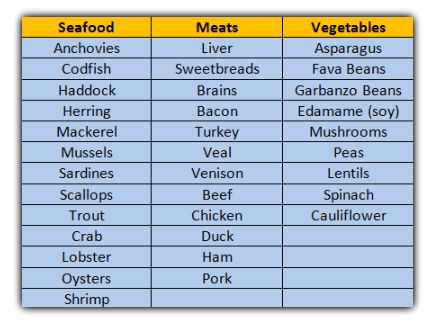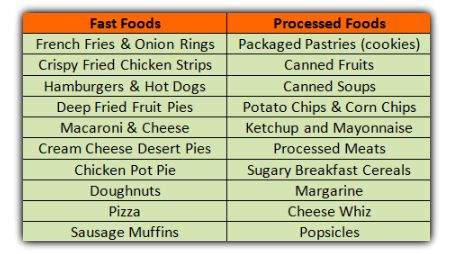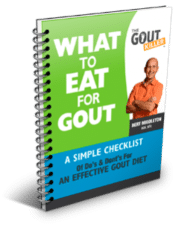When it comes to a gout diet, which gout foods to avoid, and which of the gout foods to take advantage of is a constant source of confusion for most people struggling with this intensely painful disease.
A better way to categorize gout foods would be by using the designations of “detrimental, neutral, or therapeutic”. But this method is far from the current reality of how gout symptoms are dealt with today.
Start a diet that will help control your gout, not trigger attacks! Today we cover everything you need to know about the gout diet, what to eat/avoid, & gout diet plans.
What To Eat And What Not To Eat
Here we start to create a list of gout foods to avoid and a list of which ones are helpful. You will be surprised to find that many of the foods that are good for gout have been condemned by the medical community.
(Eat!) The Best Foods for a Gout Diet
Carefully selecting the foods you eat can lower your chances of experiencing a gout attack. Follow these recommendations to manage your gout effectively.
Meats: Choose lean or free-range chicken, grass-fed beef like filet mignon, and wild-caught salmon. Eat smaller portions (4 to 6 oz) of meat only a few times weekly.
Vegetables: Avocado, celery, bell pepper, cucumber, carrots, spinach, kale, and broccoli are excellent choices for vegetables.
Fruits: Grab some blueberries, apples, lemons, oranges, peaches, pears, bananas, and red grapes.
Coffee: Go ahead and grab that cup of coffee! This study found that “coffee consumption can causally reduce gout risk, and that it may reduce gout risk independently of SUA levels.”
Nuts and Seeds
Whole grains
Vitamin C and Cherries
Water, Water, And More Water
Water has been subject to negative manipulation by the corporate world as well. Although water is the most fundamental nutrient for the treatment of gout, it is the nutrient that 98% of people around the world are deficient in.
The human body is roughly 75% water. When it is even slightly deficient, it starts to effect all the other systems included the urinary, digestive, and excretory systems. Keeping these systems functioning is an obvious part of remaining gout free.
Water can also be a carrier of toxicity, and acidic in nature. While reverse osmosis and distilled water is perfect for industrial applications, (perfectly pure and devoid of all minerals) it is not natural and not helpful to health; the human body needs minerals. A quality filtration system for tap water is a simple measure toward stronger health and eliminating gout. Ionized alkaline water is at the top of the list for long range gout prevention measures.
(Don’t Eat!) Foods to Avoid if You Have Gout
Purine Rich Foods
When discussing gout, the focus is usually on following a low-purine diet because purines are broken down into uric acid during metabolism. Excess uric acid in the blood increases the risk of gout attacks. Gout pain is caused by uric acid crystallizing in a joint, so limiting high-purine foods makes sense.
However, poor kidney function and the body’s reduced ability to maintain pH levels are the real causes of gout. While reducing purines in your diet can help, it’s not a cure-all!
Knowing which purine-rich foods to avoid is pretty important when it comes to dealing with gout. Here are a few you might want to steer clear of.

Processed Foods and Fast Foods
The best way to dramatize that processed foods and fast foods are bad foods for gout, is to defer to the news of our modern times. According to the American College of Rheumatology, the prevalence of gout has risen over the last twenty years. It affects 8.3 million Americans and seems to be following the same rate of growth as obesity and high blood pressure. The low-quality, denatured and processed foods of our times are killing us. Gout is just part of the statistics.
Included in the chart below are the foods you’ll definitely want to steer clear of.

High Fructose Corn Syrup
Studies done at the University of Colorado have proven that high fructose corn syrup and other forms of modified fructose is one of the most potent ways to raise blood uric acid and bring on gout symptoms.
#1 on the gout foods to avoid list, is carbonated soda pops and soft drinks. Running a close second is so-called fruit juices.
Alcohol
Alcohol produces ill health effects in many ways and should be an obvious substance to avoid for gout. In order of detrimental qualities, beer contains gout-causing purines in liquid form, so it is the worst.
Hard liquor is damaging to the kidneys and liver and adds to the cause of gout.
White wine typically contains more sugars and sulfites which makes it an inferior choice over red wine. Because red wine is produced from dark-skinned fruit, it can be a good source of the antioxidant, resveratrol. If you must drink, red wine in moderation is the best choice in regards to gout.
Gluten
Gluten intolerance and Celiac’s Disease are hot topics in the news every day. It is suspected that there are many more people suffering from symptoms that are related but completely unidentified. Gluten is a protein found in wheat. Especially in low-quality bread products, this substance coats the villi of the small intestine and this impairs absorption of nutrients and proper digestion. This slowly affects liver and kidney function which slowly leads to causes of gout.
Avoiding breads, pastas, crackers and pastries of all kinds is wise when determining what gout foods are helpful in steering clear of attacks.
What Is The Best Diet for Gout?
The best gout diet is NOT one that just avoids purines. Yes, you do need to learn about and manage your purine intake, but getting onboard with an ideal gout diet that will help with the treatment of your gout includes something way more important: support for your kidneys.
Uric acid is only one of the many types of acid your kidneys are trying to process, so the best diet for gout is an alkaline diet.
PH Balance
In other words, a gout diet is a pH management diet. If you’ve got gout, chances are you’ve inadvertently been eating an overly-acidic diet. In fact, most people these days are consuming too much acidity and this is resulting in a bunch of different kinds of health problems.
For some, this highly acidic diet contributes to obesity, for some diabetes, and for you and me… gout!
Again, the most important part of a good gout diet is to eat an alkaline diet. This is critical if you want your kidneys to have a fighting chance of properly eliminating toxic, acidic wastes, so that you don’t get gout attacks anymore.
A Gout Diet Limits Purines
Eating an alkaline-focused gout diet will automatically minimize your purine consumption. If you are new to the gout world, you’ve probably been hearing about purines and uric acid, but do you really understand exactly how these contribute to gout?
If you want to have control OVER your gout, rather than being at it’s mercy, do yourself a favor and spend a few minutes learning why and how the best gout diet will always minimize your purine intake.
Gout Diet Plan
This is a simple meal plan for a busy day, designed with therapeutic gout foods. Also, don’t forget to check out our full gout diet plan with over 80 recipes. It seriously took me forever to write them all out, but glad I did. It includes breakfast, lunch, and dinner recipes for four whole weeks!
Breakfast: Banana and Cherries Smoothie
Half cup of frozen organic cherries, one banana, one cup of whole raw milk, 2 organic raw eggs, one teaspoon of raw cacao powder, 1 tablespoon of spirulina, and one teaspoon of real maple syrup. Blend thoroughly and drink.
For additional protein and calories slice up one organic apple, and eat it with three ounces of raw whole milk cheese.
Lunch: Hearty Lunch Time Salad
Start with a large bowl of organic red leaf lettuce over a generous bed of quinoa (prepared ahead of time). Add to it, a half an avocado, capers, kalamata olives, one stalk of chopped celery, grated parmesan cheese, and two ounces of garbanzo beans.
Dress with high-quality olive oil and balsamic vinegar, and season with sea salt and fresh ground black pepper.
Dinner: Grilled Chicken (or Sautéed)
Start with an organically raised, 6oz chicken breast. Rinse thoroughly, pat dry, coat with olive oil, and salt and pepper. Grill on preheated grill for approximately four minutes on each side.
In a large pot, bring half a cup of water to boil. Wash and rinse a large head of broccoli, cut it into medium-sized chunks and put in the boiling water for about 2 to 3 minutes.
Using some of the prepared quinoa from lunch time, prepare a generous bed of quinoa on a plate. Also cut a lime into eighths.
When the chicken and broccoli are ready, (try to time them together) put them on the plate of quinoa, generously butter the broccoli, and squeeze a generous amount of lime on the broccoli and chicken, and salt to taste with sea salt.
Common Gout Diet Myths
The High Purine Myth
In every piece of written material available about what to eat for gout, (except here) the primary focus is about avoiding purine rich gout foods like liver, organ meats, anchovies, red meat and shellfish. This is a disgraceful lack of intelligence on the part of the medical community.
Following along with what was said earlier about processed foods and fast foods, there is a complete absence of evaluating what it is, that the vast majority of people in the US and around the world are eating every day.
Liver, organ meats and anchovies are rarely a part anyone’s diet. Red meat and shellfish are more common but there is one important missing fact: these foods are heavily processed.
The bulk of red meat is extremely poor quality and raised on genetically-engineered corn. This infuses the nutrient-deficient meat with acidity and a whole host of antibiotics and synthetic hormones that make it unfit for human consumption.
Using red meat as an example, grass-fed beef, organically grown and free of hormones and antibiotics, is loaded with healthy fats, including omega-3 fatty acids. It is also full of fat-soluble vitamins and minerals that are essential for healthy kidney function. (Medline Plus)
The Low-Fat Myth
Once believed to be heart-healthy, low-fat foods of every kind were promoted for every affliction including gout. The truth has finally surfaced, and as stated earlier in the section about high purine foods, the importance of healthy fats in our diets has prevailed.
While commercial dairy should be illegal, raw whole milk and cheese provide vital fat-soluble vitamins and minerals and live enzymes the way nature intended them. Butter from grass-fed, organically raised cows is one of the healthiest foods for promoting strong liver and kidney function.
News articles laying to rest the notion that all fats are bad, and the misinformation about low-fat foods, appear daily.
By becoming familiar with designating gout foods by “detrimental, neutral, and therapeutic”, you can start to gain awareness of the foods that produce a more healthy alkaline inner body condition that does not foster gout – OR a more unhealthy acidic inner body condition that is prone to creating gout attacks.
Staying completely hydrated is the prerequisite to strong health. Combining proper hydration with a clean diet of alkaline-forming foods produces a gout-free existence.
☆ Remember! Clean and therapeutic gout foods are your ticket to a pain-free life.

“I know your pain. Let me help you kill your gout for good! And teach you to advocate for yourself and take ownership of your gout recovery, by showing you how to live the gout-free lifestyle.” Two decades ago, Bert Middleton found himself diagnosed with gout. Like 8.3 million other people in the United States (approximately 4% of the population), he struggled helplessly with the physical, emotional, social, and financial impact that gout left unchecked can have on your life. Prescription drugs were of limited help… And the terrible pain of regular gout attacks left him unable to enjoy even the simplest daily pleasures. His marriage was suffering. His finances were spiraling due to the impact gout had on his ability to work. And maintaining a social life was often nearly impossible. Tophi surgeries left him in terrible pain. And he found himself depressed … and angry … that gout was stealing years of his life.
Until one day, after hundreds of hours of research and self-experimentation, Bert finally had a breakthrough and created a blueprint for a way of living that would prove to be “the answer” to living gout-free for nearly a decade now. Today, Bert and his “Gout Wife” Sharon devote their evenings and weekends to educating other gout sufferers on how to live the gout-free lifestyle. Showing others his 911 Emergency Response Gout Recovery Plan for getting PAINFUL gout attacks under control in as little as 4 hours. And then, how to make daily choices that keep gout under control for GOOD! So you can finally start LIVING again!

